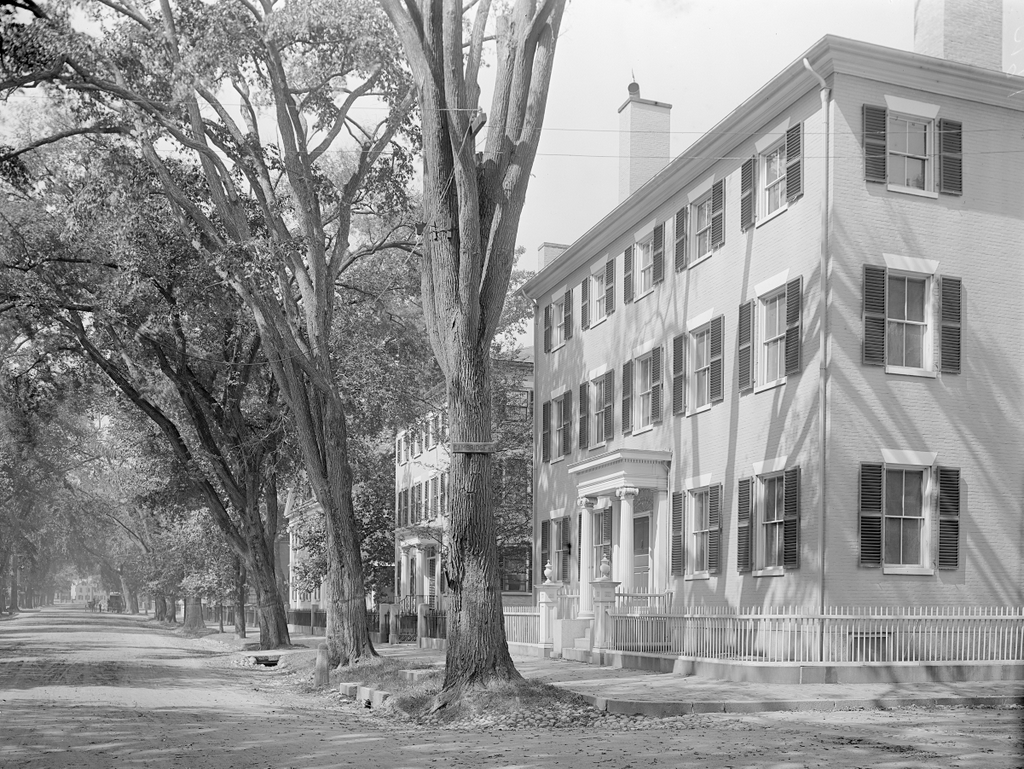The view looking west on Chestnut Street from the corner of Cambridge Street in Salem, around 1890-1910. Image courtesy of the Phillips Library at the Peabody Essex Museum, Frank Cousins Glass Plate Negatives Collection.
The scene in 2023:
These two photos show the view looking down Chestnut Street, which was developed in the early 19th century as an upscale residential neighborhood for Salem’s merchant class. Most of the homes feature Federal style architecture, and some of the ones in this scene have been highlighted in previous posts, including the James B. Bott House, the John C. Lee House, and the Captain Jonathan Hodges House.
Closest to the foreground, at the corner of Cambridge Street, is the house at 10 Chestnut Street, which was built around 1808 as the home of merchant Nathan Robinson. He lived here until his death in 1835, and the house was subsequently owned by several other families before being purchased by artist Philip Little in 1888. He was living here when the top photo was taken around the turn of the 20th century, and he remained here until his death in 1942.
Today, very little has changed in more than a century since the top photos was taken. All of the houses are still standing, and most have remained relatively unaltered. The street is one of the best surviving examples of a Federal-style residential neighborhood anywhere in New England, and it is part of the Chestnut Street District, which was added to the National Register of Historic Places in 1973.


